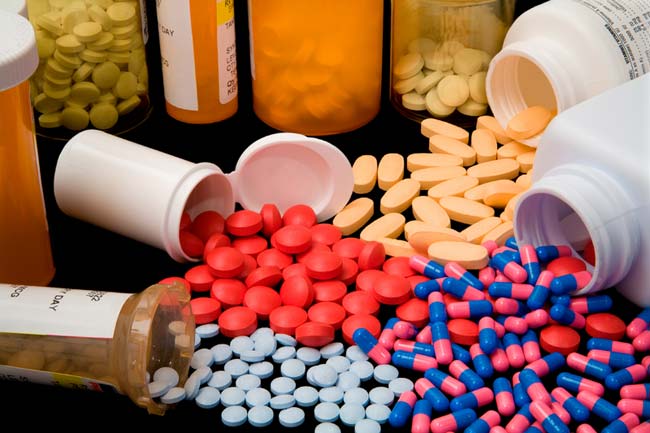Prescription Drug Bottles Lack Proper Safety Warnings

Drugstores are not providing adequate safety information to consumers when they pick up their prescription medications, according an investigation from Consumer Reports.
The report reveals that drug labels sometimes lack key safety warnings, and some pharmacies fail to include the medication guides required by the federal government.
The report was based on a "spot check" of drugstores in Yonkers, N.Y., belong to five chains. While the findings are not representative of other stories in these chains, they raise significant concern, the investigators said.
"We were shocked by what we unearthed," said Dr. Marvin Lipman, chief medical adviser of Consumer Reports Health. "We found that critical warnings were absent from some drug labels, and information sheets were confusing, loaded with medical jargon, and sometimes unreadable due to tiny print.
"It's very worrisome to think of consumers taking dangerous drugs without adequate warnings."
The report suggested that consumers need to be on their guard, particularly when starting a new medicine.
Investigating drug labels
Sign up for the Live Science daily newsletter now
Get the world’s most fascinating discoveries delivered straight to your inbox.
Investigators went to Costco, CVS, Target, Walgreens and Walmart to fill prescriptions for warfarin, a blood thinner used to prevent strokes.
Four of the five pharmacies failed to provide a federally mandated medication guide required for warfarin.
While all of the pharmacies provided their own patient materials, known as consumer medication information (CMI), these differed from the FDA-approved guide for warfarin and contained conflicting warnings about alcohol. For example, the Costco and CVS materials advised patients to "limit or avoid alcohol," but the FDA-approved guide recommends abstaining from alcohol altogether.
The stores also differed in terms of how many warning labels were placed on the actual medication bottles. Research suggests consumers rely heavily on the label that’s affixed directly on the bottle. Target and Walgreens provided four warning labels, CVS three, Costo two, and Walmart none. However, a second trip to Walmart did yield three warning stickers on the bottle.
The problem
Part of the problem is that for prescription drugs, there's no nationwide standard like the "Nutrition Facts" on food packages or the "Drug Facts" on over-the-counter medication, said Lisa Gill, an editor at Consumer Reports Health.
"Consumers probably know more about their Cheerios than their prescriptions drugs," Gill said.
While the FDA requires certain details on labels, such as a patient's name and dosage instructions, it does not monitor drug labels. Rather, each state’s board of pharmacy is responsible for their content. And whether or not there are warnings on the bottles is left up to the individual pharmacist.
“It’s my opinion that the inconsistencies and omissions on drug labels really cry out for uniformity and federal oversight." Lipman said.
Consumer Reports recommended consumers speak with their doctor and pharmacist about how much medication to take and when, and how often to take it. Consumers should also ask about side effects and substances that should be avoided while on the medication.
The report estimated there are 1.5 million preventable medication errors each year, one third of them outside of hospitals.
This story was provided by MyHealthNewsDaily, sister site to LiveScience. Follow MyHealthNewsDaily on Twitter @MyHealth_MHND.









